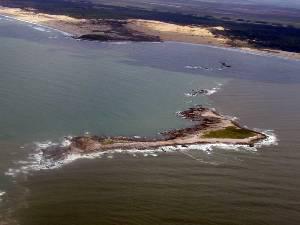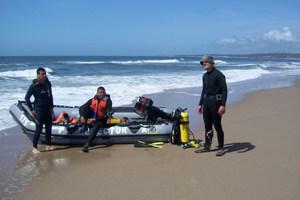Alvar Carranza
Other projects
4 Dec 2006
Pilot Programme for Ecosystemic Monitoring in Cerro Verde (Uruguay): Benthic Invertebrates as a Tool for Conservation - Phase II
11 Jun 2009
The Blue Mussel Fishery in Punta del Este – Exploring Co-Management Practices and Strategies for the Control of Invasive Species
In the first step of the project, we gather abundant quantitative data on species abundance, distribution, and temporal variation at the intertidal and subtidal rocky platforms.
Rapid degradation of the oceans is triggering increasing calls for efforts to protect, maintain, and restore marine ecosystems. Coastal development, land based chemical and nutrient pollution and shipping practices combine to alter the structure and functioning of marine and coastal ecosystems globally. In this context, implementation of MPA’s is a critical issue for the protection of marine life and their habitats.

Air view of the study area.
These areas may provide multiple benefits, including protection of habitat, conservation of biodiversity, insurance about environmental uncertainty and sites for scientific investigation, baseline information, education and recreation. However, data on several key ecological and life history features of marine reserves and communities are needed in order to select the placement and extent of an MPA (marine protected area).

Scuba divers ready to perform a biological sampling.
Cerro Verde (Uruguay) is known as high-diversity spot harbouring a high species richness of benthic organisms, a yet non-defined number of fish species (eg. endangered sharks Mustelus schmitti, M. fasciatus, Sphyrna bigelowi) and marine birds, mammals (Otaria bryonia, Arctocephalus australis) and sea turtles (Chelonya mydas). This site was designed as the first marine protected area in Uruguay covering over 510 km2 of a marine-coastal ecosystem. In the first step of the project, we gather abundant quantitative data on species abundance, distribution, and temporal variation at the intertidal and subtidal rocky platforms. This allowed us to obtain the first complete faunal inventory for this environment and to explore the ecological factors controlling local biodiversity. The first results will be published at peer-reviewed international journals (Acta Oecologica, Brazilian Journal of Biology in 2007).
In order to complete the faunal inventory, we now aims to inventory the soft-bottom invertebrate fauna within the reserve by means of benthic surveys onboard the artisanal fleet, using appropriate sampling devices such as epibenthic dredges. This will allow us to obtain information on benthic invertebrate diversity at the whole area, improving the baseline for the evaluation of environmental impacts and contributing to the design of management plans for the MPA.